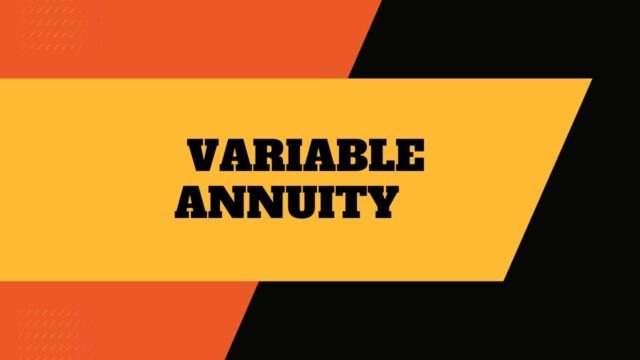
What is a Variable Annuity
A variable annuity is a type of investment that offers the potential for tax-deferred growth and a death benefit. With a variable annuity, you can invest your money in a variety of different options, including stocks, bonds, and mutual funds. The value of your investment will then fluctuate based on the performance of the underlying assets. One of the main advantages of a variable annuity is that your earnings can grow tax-deferred until you withdraw them. This can provide a significant boost to your investment returns over time. In addition, most variable annuities also offer a death benefit, which can help to protect your loved ones financially in the event of your passing.
How does a Variable Annuity work
A variable annuity is an insurance contract that allows the policyholder to invest their money in a variety of different options, including stocks, bonds, and mutual funds. The policyholder can choose how their money is invested, and they can also make changes to their investment portfolio over time. The benefits of a variable annuity include the potential for higher returns than a traditional fixed annuity, as well as the ability to tailor the investment portfolio to the policyholder’s individual needs. However, there is also the potential for loss with a variable annuity, and it is important to consult with a financial advisor before making any decisions.
The benefits of investing in a Variable Annuity
Unlike a traditional fixed annuity, which offers a guaranteed rate of return, a variable annuity’s performance is linked to the performance of underlying investment options, which may include stocks, bonds, and mutual funds. While there is no guarantee of how much your investment will grow, a variable annuity can offer the potential for greater growth than a fixed annuity. And, because the earnings on a variable annuity are tax-deferred, you can reinvest your earnings and potentially compound your growth. If you’re looking for an investment with the potential for tax-deferred growth and flexible income options, a variable annuity may be right for you.
The risks associated with investing in a Variable Annuity
There are some risks associated with this type of investment. One risk is that the investments within the annuity can lose value. This means that the income you receive from the annuity may be less than what you originally invested. Another risk is that the annuity may not keep pace with inflation. This means that over time, your income may not be worth as much in terms of purchasing power. Finally, if you decide to withdraw money from your annuity before reaching retirement age, you may incur substantial charges or penalties. For these reasons, it is important to carefully consider the risks before investing in a variable annuity.
How to choose the right Variable Annuity for you
When choosing a variable annuity, it’s important to consider your investment goals, risk tolerance, and time horizon. First, decide what you hope to accomplish with the account. Are you looking for long-term growth, immediate income, or some combination of the two? Next, think about how much risk you’re comfortable taking. Variable annuities typically offer a range of investment options, from conservative to aggressive. Finally, consider how long you’re willing to keep your money invested. Some variable annuities have surrender charges if you cash out early, so it’s important to choose an account that aligns with your time horizon. By taking these factors into consideration, you can select the right variable annuity for your needs.
The tax implications of investing in a Variable Annuity
When it comes to investing, there are a lot of options to choose from. One option you may come across is a variable annuity. But before you invest in one, it’s important to understand the tax implications. With a variable annuity, your investment is subject to taxation when you make withdrawals. So if you’re looking for tax-deferred growth, a variable annuity may not be the best choice. On the other hand, if you’re in a high tax bracket and expected to be in a lower tax bracket when you retire, a variable annuity could be a good way to save on taxes. Ultimately, it’s important to speak with a financial advisor to see if a variable annuity makes sense for your unique situation.
The different types of Variable Annuities
There are two main types of variable annuities: immediate and deferred. With an immediate annuity, you start receiving payments immediately after you make your deposit. This can be helpful if you’re looking for income right away or if you’re near retirement. Deferred annuities, on the other hand, grow tax-deferred until you start taking withdrawals. This type of annuity is often used as a long-term investment, since it has the potential to grow more over time. There are also different types of investment options available with variable annuities, including stocks, bonds, and mutual funds. This allows you to tailor your investment to your specific goals and risk tolerance. And finally, there are also different withdrawal options available, so you can choose how and when you receive your payments. Whether you’re looking for immediate income or long-term growth potential, there’s a variable annuity that can fit your needs.
4 common mistakes people make when investing in a Variable Annuity
A variable annuity is a type of investment that can offer many benefits, but it’s important to avoid making common mistakes when investing in one. Here are four mistakes to avoid:
1. Not doing your research: It’s important to understand how variable annuities work before investing in one. Make sure you know the fees and charges associated with the annuity, as well as the risks involved.
2. Investing too much: You should only invest what you can afford to lose in a variable annuity. Remember that these types of investments are subject to market risk, so there’s no guarantee you’ll make money.
3. Not diversifying: Don’t put all your eggs in one basket by investing all of your money in a single variable annuity. Diversify your portfolio by investing in different types of assets, such as stocks, bonds, and cash equivalents.
4. Not reading the fine print: Be sure to read the contract carefully before signing it. Understand all of the terms and conditions, including any surrender charges that may apply if you cash out early.


































